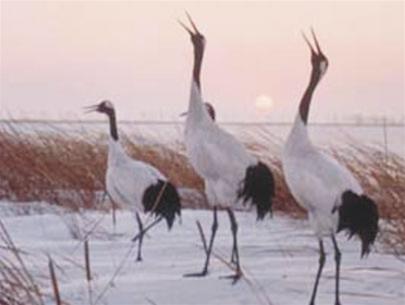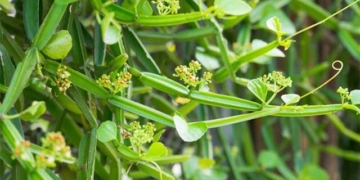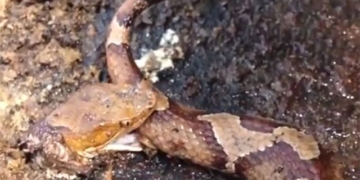In countries like China, North Korea, and Japan, paintings of the Red-crowned Crane alongside ancient pines are commonly seen, symbolizing longevity. In reality, the Red-crowned Crane, often mentioned in legends, is a large waterbird that inhabits wetlands and shallow waters, with no connection to pine trees. Furthermore, its lifespan is only about 20-30 years, which is not particularly long.
 |
|
Red-crowned Crane Grus Japonensis |
The Red-crowned Crane is known for its elegant demeanor and beautiful appearance, characterized by its tall stature with three long features: a long beak, a long neck, and long legs. When standing, they reach over 1 meter in height. Their plumage is white, while their throat, neck, and cheeks are a dark brown. The black wing feathers arc over the white tail feathers. Notably, the crown of their head is a striking red, resembling a red hat, hence the name Red-crowned Crane.
The Red-crowned Crane is a typical migratory bird, following a regular north-south migration pattern according to seasonal changes. They often gather in flocks on expansive reed beds or in grassy wetlands to feed on shrimp, fish, clams, and plants. Every April, they pair up, and in the early morning or late evening, their calls can be heard echoing up to 2-3 kilometers away. During courtship, the male actively stretches its neck and spreads its wings, continuously calling “kuh kuh,” while the female responds with a dance, making sounds like “ku a ku a.” They continue this dance and song until they decide to mate for life.
The Red-crowned Crane typically lays eggs in the latter part of April. They do not have a distinct nesting period and only select a dense grassy area to build their nest a few hours before laying. After laying the eggs, the female incubates them while the male stays nearby to guard the nest. Approximately one month later, the eggs hatch, and during this time, when the female leaves the nest to forage, the male takes over the incubation duties.
In May, the chicks break free from their eggs and, within 20 hours, start to walk and swim unsteadily. After three months, they grow into adult cranes, capable of flying freely and foraging for food. From mid-October to late October, they follow their parents in a formation resembling the letter “V” (/) or a straight line (-), migrating thousands of kilometers south. They return to their homeland in March of the following year.
According to statistical surveys, the total number of wild Red-crowned Cranes left in the world is approximately 1,200, placing them on the list of protected species.


















































